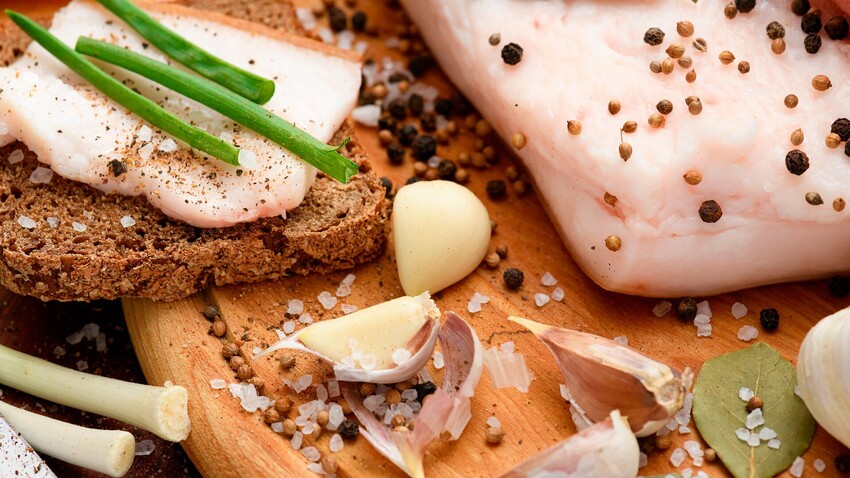
Salo is not only tasty, it wards off illness (or so they say). Here’s how to make it.
Legion MediaFor a long time, salo was the main way to preserve the edible parts of a pig carcass over the winter. There are three main salt-curing methods: dry (sprinkled with spices and salt), wet (in brine, then smoked) and hot (the salo is boiled). Each has its own variations, which can vary depending on the region, family traditions and culinary preferences.
For salt-curing, it is better to choose salo with skin – it is believed that the healthiest substances are right under it. The salo should be snow-white, elastic and homogeneous, with a thickness of 3-15 cm. There should be no off-aromas. Before salt-curing, salo can be soaked in water for 12 hours to soften it. Salo with meat veins takes longer to do.
Salo goes well with hot boiled potatoes. And a piece of salo on black bread makes a classic vodka snack.
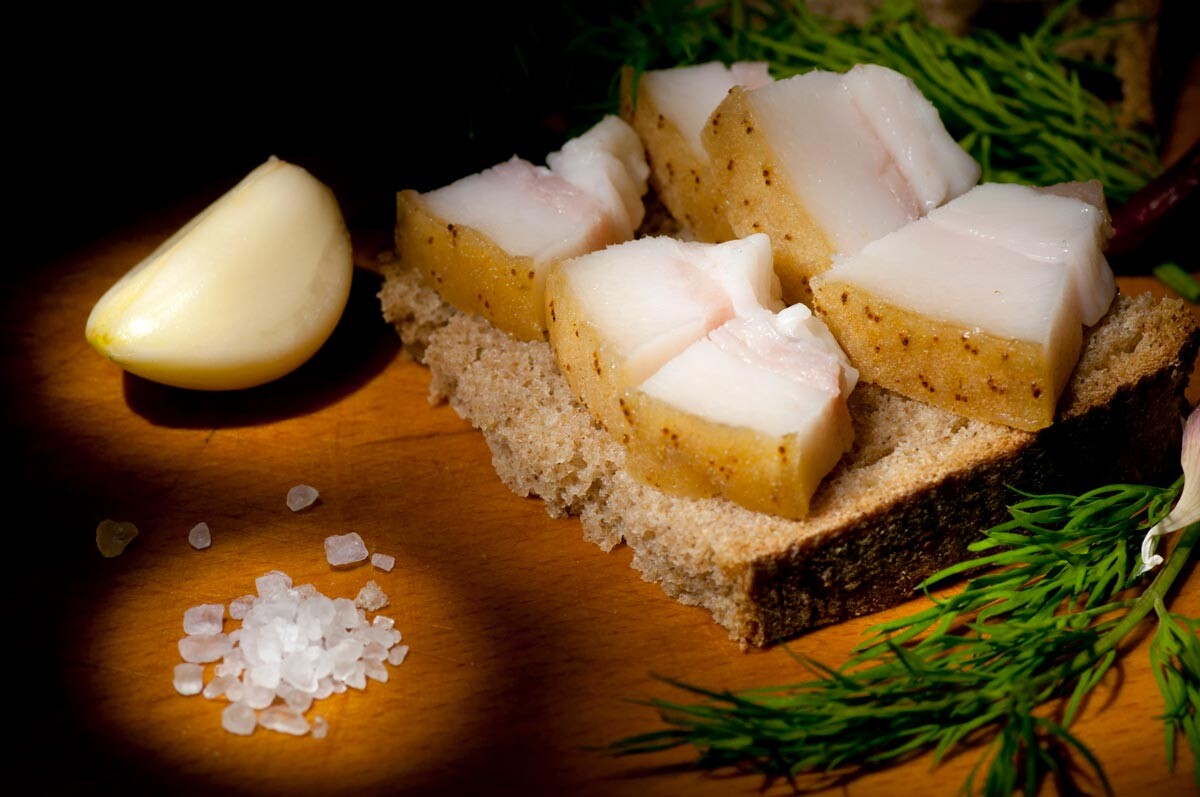
Preparation: Rinse and dry a piece of fresh salo (2 kg), place in a pan, sprinkle abundantly with salt on all sides, cover with the lid and refrigerate for five days. Then shake off excess salt, rub the salo with chopped garlic (4-5 cloves) and sprinkle with dill seeds, pepper, coriander and chopped bay leaves. Plastic-wrap the salo and place in the refrigerator for two days. The salo is now ready to go. Can be stored in the refrigerator for about a month.
If you want to taste homemade salo a bit more quickly, try making “daily salo.” The method is almost the same as above, only it’s important to cut the salo into pieces and remove the skin. For this recipe, salo without meat veins is recommended.
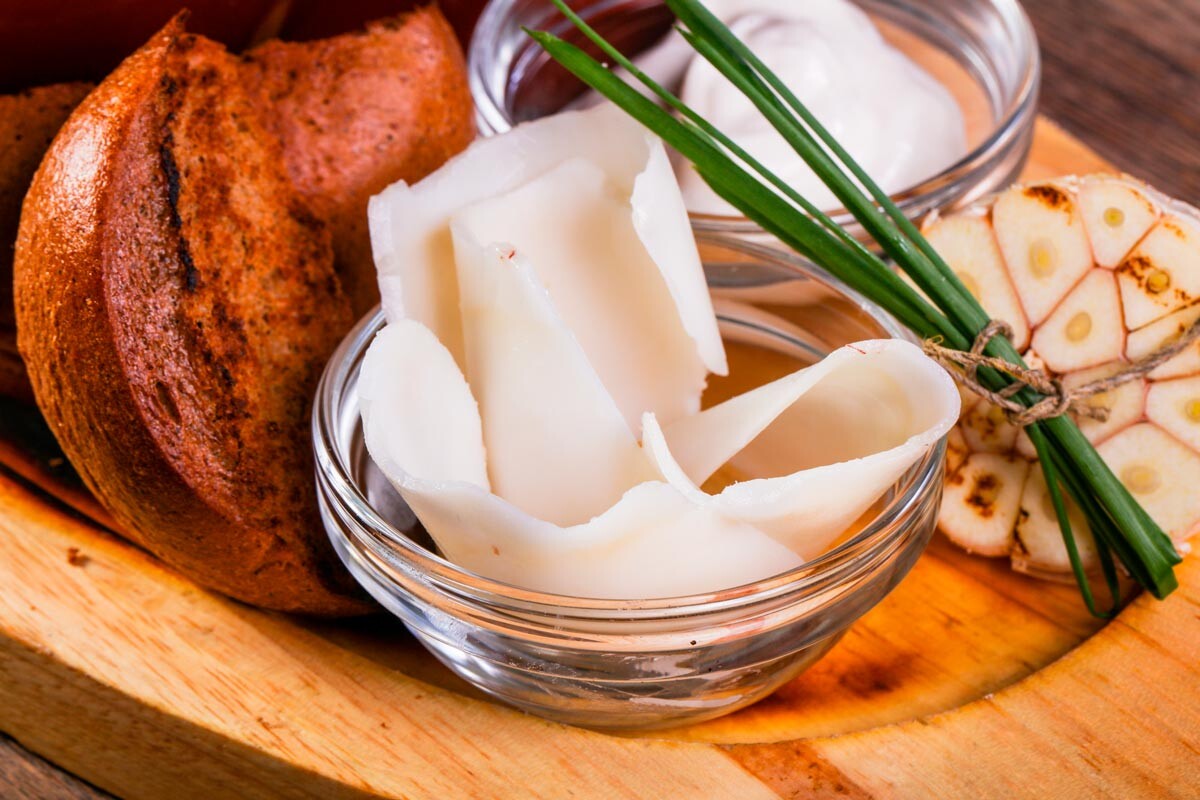
Preparation: Remove the skin from the fresh salo (1 kg), dice into 5x5-cm cubes, roll in coarse salt and black ground pepper, season to taste and place in a jar or pan, adding finely chopped garlic (3 cloves). Sprinkle with salt on top and cover with the lid. Put the container in a warm place for a day, after which the salo will be ready. Shake off excess salt before consuming. Store in the refrigerator for no longer than a month.
For this recipe, salo with a layer of meat is best.
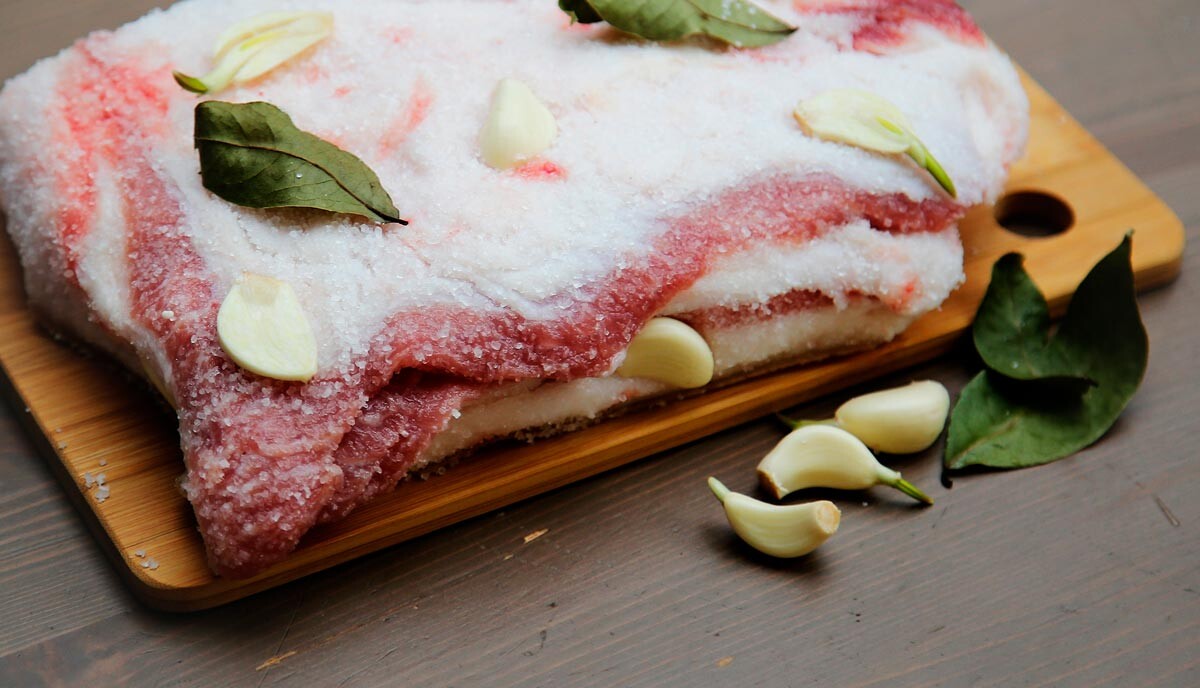
Preparation: Make cuts along the piece of salo (1 kg), insert garlic-clove halves (3 cloves) into the indentations. Sprinkle the salo on all sides with coarse salt (100 g) and wrap in cotton cloth. Leave for two days in a warm place, then refrigerate for three days. The salo is ready. For long-term storage, wrap in parchment paper and freeze.
This is a more laborious salt-curing method, but the ready product can be stored for up to a year in the freezer. Salo with meat veins is suitable. It is usually served with pickles, rye bread and mustard. This method is popular in the south of Russia.
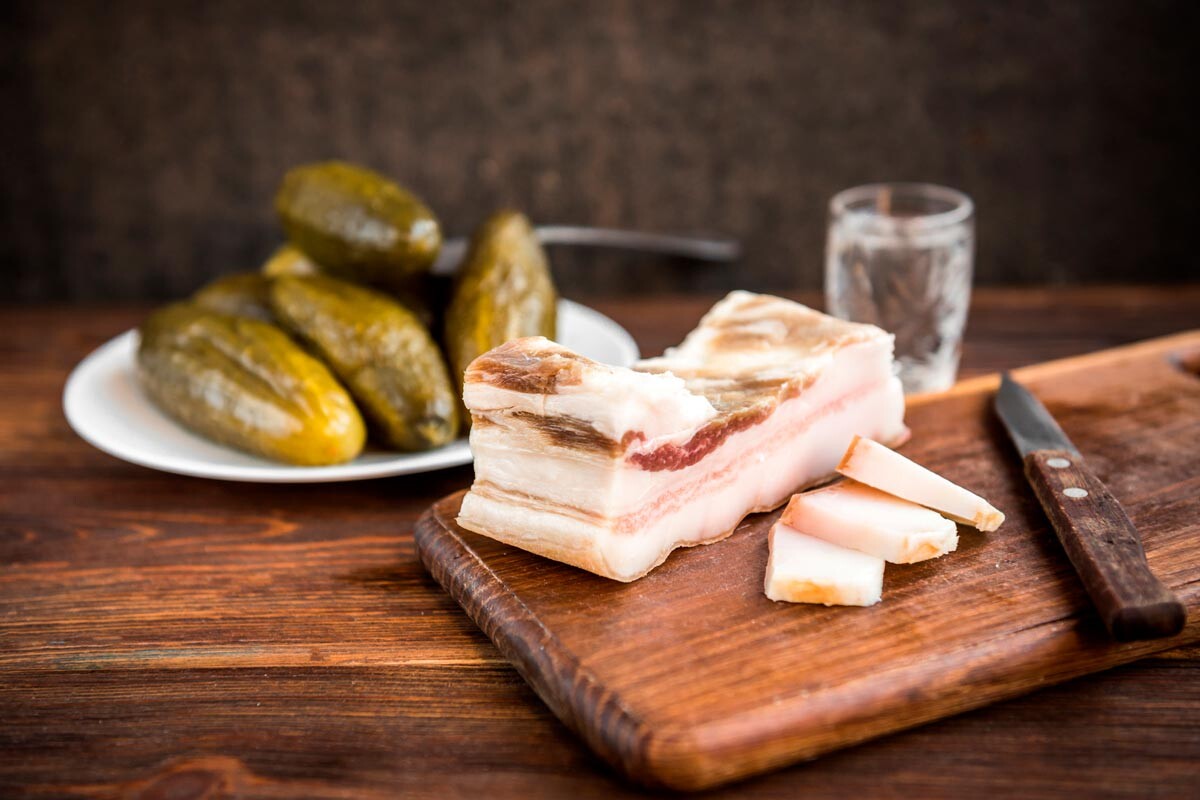
Preparation: Add salt (50-70 g) and one peeled onion to water (1 L). Add a garlic clove, black pepper and bay leaf. Boil the water and cool to room temperature. Place pieces of salo (1 kg) into the brine and garlic clove halves (3 cloves) so that the salo is covered with brine on top, and refrigerate for a week. Turn the pieces of salo over every day. After that, take out the salo, dry it, sprinkle with spices (pepper, bay leaf), wrap in parchment paper and put back in the refrigerator for another five days. The salo is now ready. Can be smoked if desired.
This recipe is good because it ensures there are no parasites in the finished product, which can then be stored for a long time in the refrigerator.
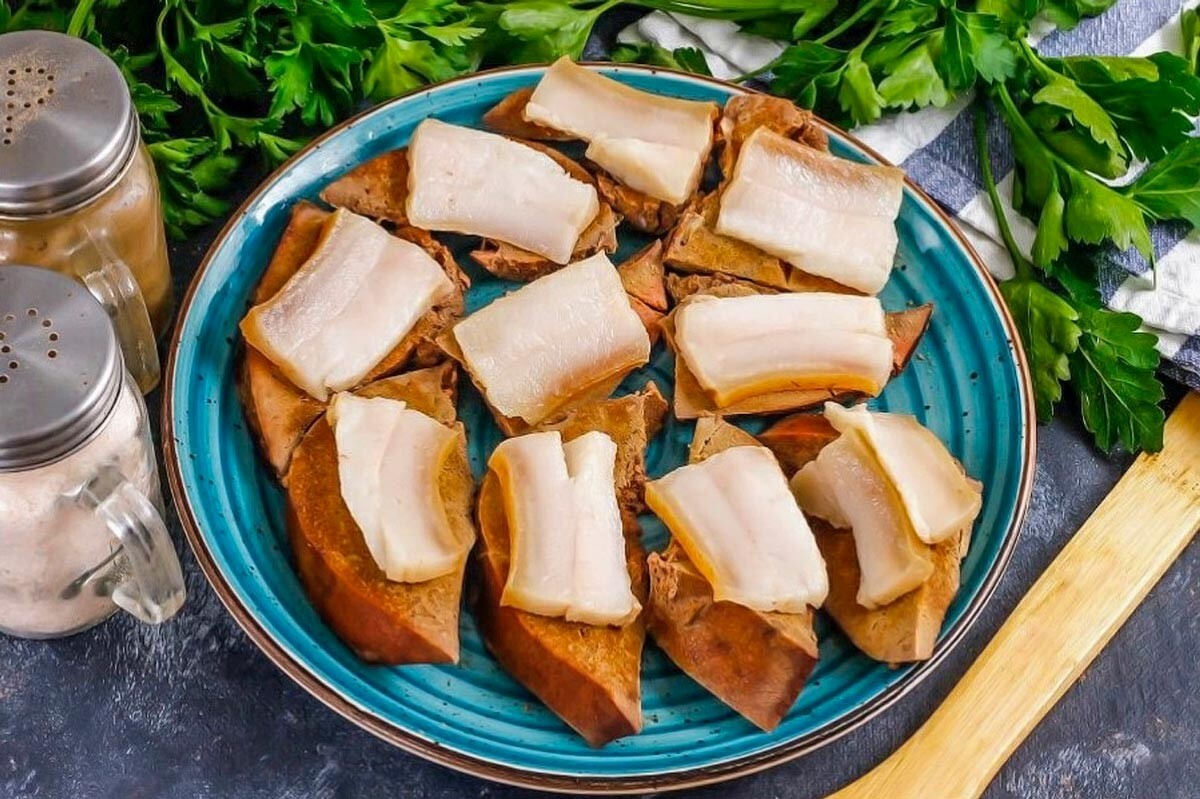
Preparation: Pour water (2 L) into a pan, add a large peeled and washed onion, and bring to a boil. Add salt (5 tbsp) and spices (2-3 bay leaves, 2-3 sweet peas, pepper) and boil for another 30 minutes until the brine darkens. Strain the brine. Cut salo (1 kg) into pieces small enough for the pan, pour over with the brine, bring to a boil and simmer thoroughly for 20 minutes. Remove the pan from the heat, cool at room temperature and leave in the brine for 8-10 hours in the refrigerator. Then remove the salo from the brine and dry. Chop garlic (4-5 cloves), grate over the salo, place the salo in a container and put in the freezer for 5-6 hours. Take out five minutes before serving, and cut into thin strips.
If using any of Russia Beyond's content, partly or in full, always provide an active hyperlink to the original material.
Subscribe
to our newsletter!
Get the week's best stories straight to your inbox